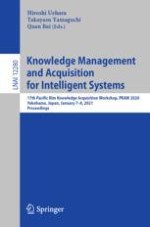2021 | OriginalPaper | Chapter
C-LIME: A Consistency-Oriented LIME for Time-Series Health-Risk Predictions
Authors : Taku Ito, Keiichi Ochiai, Yusuke Fukazawa
Published in: Knowledge Management and Acquisition for Intelligent Systems
Publisher: Springer International Publishing
Activate our intelligent search to find suitable subject content or patents.
Select sections of text to find matching patents with Artificial Intelligence. powered by
Select sections of text to find additional relevant content using AI-assisted search. powered by
